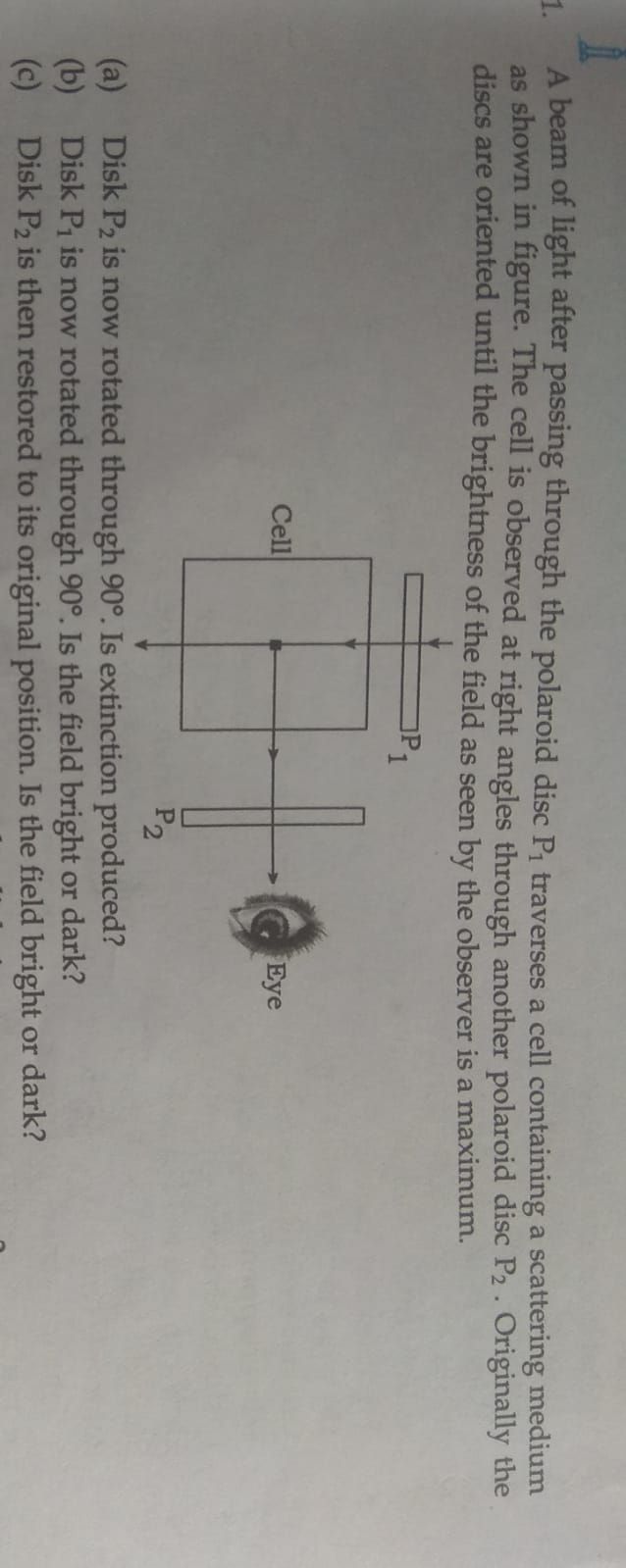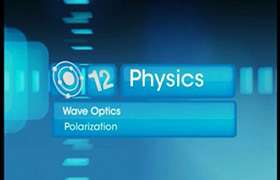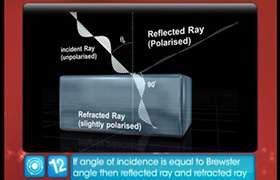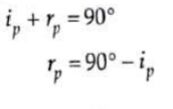CBSE Class 12-science Answered
Please refer to the uploaded image for the doubt

Asked by arjunsah797 | 15 May, 2022, 01:18: PM
Part (a)
Initially disc P1 and disc P2 are oriented so that intensity is maximum . Hence optical axis of P1 and P2 are parallel.
If P2 is rotated through 90o , then optical axis are perpendicular to each other.
hence we get dark , i.e., extinction is produced
--------------------------------------------
Part (b)
If disc P1 is rotated through 90o now, then both optical axis are parallel . Hence the field is bright
-------------------------------------
Part (c)
If disc P2 is rotated through 90o now, then both optical axis are perpendicular . Hence the field is dark
Answered by Thiyagarajan K | 15 May, 2022, 02:16: PM
Concept Videos
CBSE 12-science - Physics
Asked by arjunsah797 | 15 May, 2022, 01:18: PM
CBSE 12-science - Physics
Asked by ykadiya99 | 18 May, 2020, 06:26: PM
CBSE 12-science - Physics
Asked by abhitailor158 | 03 Mar, 2019, 06:02: PM
CBSE 12-science - Physics
Asked by agarrajeev06 | 15 Jan, 2019, 05:42: PM
CBSE 12-science - Physics
Asked by nehanithin25 | 17 Aug, 2018, 01:52: PM
CBSE 12-science - Physics
Asked by Topperlearning User | 04 Jun, 2014, 01:23: PM
CBSE 12-science - Physics
Asked by Topperlearning User | 13 Jun, 2014, 12:51: PM
CBSE 12-science - Physics
Asked by Topperlearning User | 13 Jun, 2014, 12:56: PM
CBSE 12-science - Physics
Asked by Topperlearning User | 13 Jun, 2014, 01:12: PM
CBSE 12-science - Physics
Asked by Topperlearning User | 04 Jun, 2014, 01:23: PM





